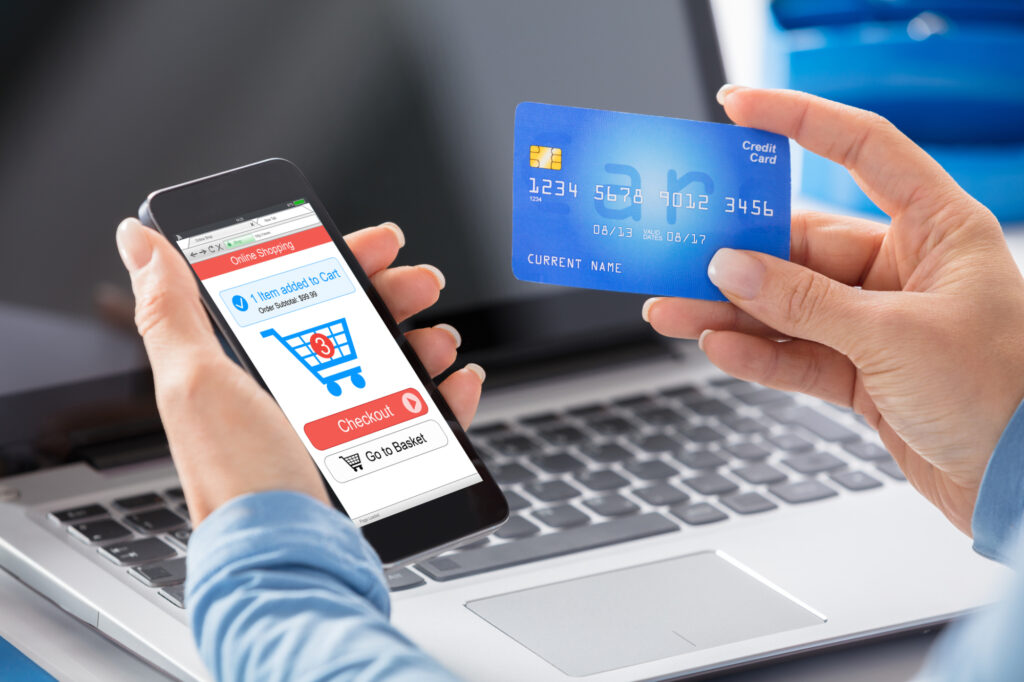
As a merchant, you want to provide your customers with multiple ways to pay, which often means offering card present and card-not-present transaction options.
You may offer in-person payments (credit card terminals), NFC (contactless payments), online payments, and over-the-phone payments. Especially today, card-not-present transactions are crucial to your business. Most people are buying from home – they aren’t coming into the store or restaurant, so this capability is a necessity.
It’s a good idea to appeal to the masses, but you should also know how the different card transactions affect you as a merchant. There are pros and cons to both options, as well as pricing differences.
Card Present Transactions: What are They?
As the name suggests, a card present transaction occurs in person. The customer presents you with the card and you run it through a machine, whether a magnetic stripe card reader or chip card reader. You may even use a contactless reader.
But this is where the confusion starts. If a customer were to hand you their card for you to enter it in manually, it’s a card-not-present transaction. Even though you are with the card, there’s no way for everyone in the credit card processing transaction to know that you were there with the card, so it’s a card-not-present transaction.
Card present transactions have many benefits, but a few downsides too.
Pros and Cons
Pros:
- Processing costs are lower because the risk of fraud is lower
- A higher level of security since the card doesn’t leave the customer’s hand
- Merchants can upsell in the payment process, by asking questions within the system
Cons:
- Merchants need credit card processing equipment to accept the credit cards
How it Affects Processing Fees
Card present transactions have fees lower than card-not-present transactions because there’s a lower chargeback and fraud risk.
For example, some merchant processors charge 2.6% + $0.10 for every transaction for card present transactions and 3.5% + $0.15 for card-not-present transactions. So let’s say the average transaction is $50. That’s a difference of $0.50 per transaction. If you have 1,000 transactions a month, that’s $500 in unnecessary expenses.
Card-Not-Present Transactions: What are They?
We touched on card-not-present transactions above, but let’s look it over again.
The name suggests the card isn’t there, but we discussed how even if it is there, and you manually enter the numbers, you pay card-not-present fees.
Other ways you can collect payment without the physical card include:
- Over the phone
- Online
- Mailing in an order form
- Automatic billing
- Online invoices
Anytime a customer uses a credit card and doesn’t swipe, insert, or use the NFC reader, it’s card-not-present. It usually involves manually entering the card information rather than letting an encrypted credit card machine do the work.
The risk of fraud is higher. It’s harder for you, the merchant, to verify the card belongs to the person using it. Even if a person is in front of you, you can’t know who they are and if the card belongs to them. There is a much greater risk because there aren’t any security measures ensuring it’s a legitimate transaction.
Like a card present transaction, there are pros and cons to the CNP transaction.
Pros and Cons
Pros:
- Provides customers another way to pay, especially when they aren’t in your store
- May help increase sales
- It’s easier than trying to deal with cash and checks
Cons:
- Higher risk of fraudulent activity
- Higher processing fees
How it Affects Processing Fees
Like we said above, CNP transactions are more expensive. Credit card processors take a risk in accepting the charge. There’s the risk of stolen cards and chargebacks. If you have primarily all card-not-present transactions, you will pay a lot more in processing fees than if you could accept card present transactions.
How to Reduce the Risk of Card-Not-Present Transactions
It’s easy for criminals to steal credit card information and make purchases online. All they need is the customer’s name, address, and credit card number. They can easily make transactions online or over the phone and no one would know the card doesn’t belong to them.
To make CNP transactions less risky, merchants should do what they can to verify the customer’s identity. One of the best ways is to ask for the 3-digit security code. If a criminal didn’t think to get the security code or couldn’t access it, they won’t be able to use the credit card.
Other methods include:
- Using the Address Verification System
- Check the zip code used to make sure it’s for the right city and state
- Validate the customer’s email address right away by sending a confirmation – if it bounces back, it’s a sign of fraud
- Contact the customer whose name is on the card and make sure they made the purchase
- Use a mobile POS so you can take card present transactions anywhere
Understanding Card Present and Card-Not-Present Transactions
It’s important to understand card present and card-not-present transactions. Sometimes you can’t help but accept card-not-present transactions, but taking many precautions is important.
Not only will it cost you more money for CNP transactions, but the risk of fraud and chargebacks are high. If a customer’s card is stolen or used fraudulently, it’s a chargeback on you, which could hurt your chances of getting a new credit card processor if you have too many.
Do what you can to protect your business and your customer’s information to ensure that every transaction or at least most transactions are legitimate.
